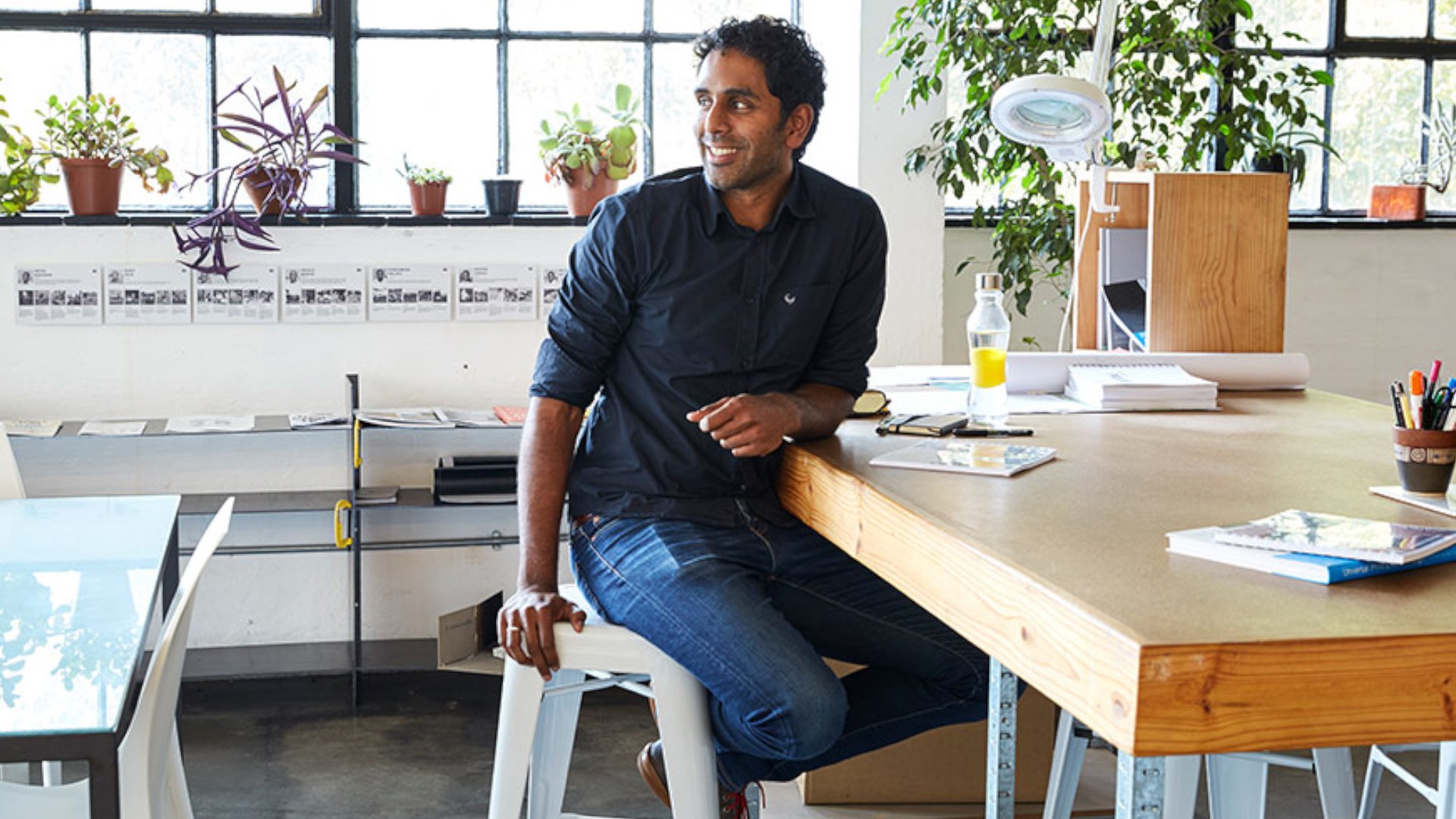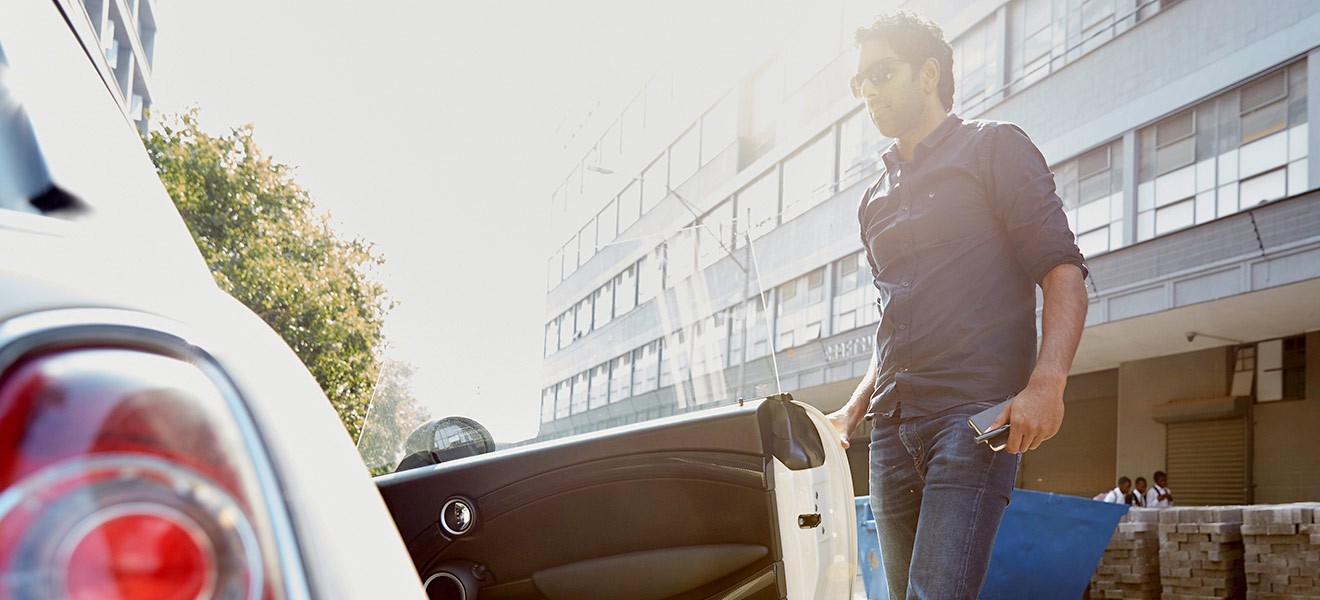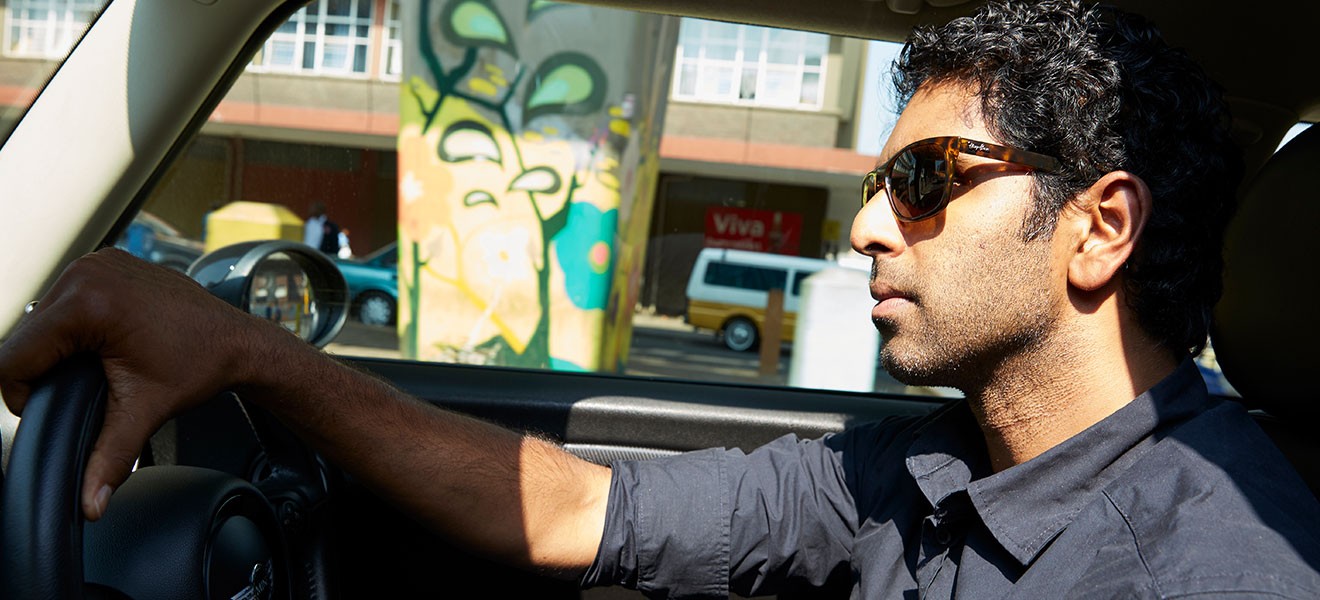Our tool for managing your permission to our use of cookies is temporarily offline. Therefore some functionality is missing.

EXPLORING JOBURG’S URBAN MOMENT WITH THIRESH GOVENDER.
We accompanied urbanist, architect, strategist and design guerrilla Thiresh Govender on a drive through Joburg, from his studio in Maboneng to his favourite spot in the city, Constitution Hill
Thiresh Govender is an observer of urban spaces. He’s interested in their politics, economics and social consequences. He likes to speak about the hidden language of spaces – and how they affect our lives. He asks questions like: what is the power of space in our cities and how can we use that understanding to push toward a more radical urban future?
He has been involved in everything from drafting strategies for city planners in places as far-flung as Windhoek and Ivory Park to local areas like Cape Town and Hillbrow. He’s fascinated by the life made by structures and the spaces made by life, and constantly tries to understand the hidden parts of life in our cities – the rogue-ness that emerges in the in-between spaces. He’s probably more interested in how people use spaces – repurposing them for their own uses and transforming them in ways that were probably never intended – than the buildings themselves.
We met him at his studio in Maboneng and drove with him to his favourite place in the city, Constitution Hill, which exemplifies the way that spaces can be transformed and reinvented. UrbanWorks co-designed the Flame of Democracy there, a symbol of democracy at the doors of the Constitutional Court. Although the brief was initially for a grand gesture, they devised an intimate anti-monument, all the more affecting for its small size.
What follows are snippets of conversation from our afternoon traversing Joburg.

On Johannesburg:
This place is more interesting than Central Europe could ever be for me. That moment has happened. Our urban moment is too urgent to be complacent… You’re going to be passive? At this moment? You’ve got to be kidding me! If you’re going to tap into something that is uncertain and you’re creative, there is no better place than Johannesburg to get into an engaged dialogue.
On Constitution Hill:
This here is one of my favourite spaces in Joburg. This site, coupled with the institutions that occupy these buildings, is the wellspring of our nation’s integrity. It’s my feel-good place when things grow dark. I come here for reflection and relief – soul relief. Symbolically, the transformation from a site of oppression to a site of triumph in our democracy is really, really special.
On Hillbrow:
Hillbrow made and was made by an active public street life. Sixty years ago, it was a dramatically different place. If you look at it now, it’s the same buildings, but used very differently by a completely different social order. People, albeit of a different economic class, still use the street – intensely. Developers [can see] the potential of such intense street life, so they [recognise the] need to tap into it, and base their business models on this logic. Hillbrow, albeit radically transformed, moves our urban conversation forward. Sandton works on a completely different economy and principle. I counted 21 cranes in Sandton the other day. Here, private and insular real estate is the generator of [wealth], not the street. It’s these massive infrastructure projects. There’s no incentive to include street-level shops, because there’s no active street life.
On Sandton:
My hope for Sandton is that it too will have its heyday [like Hillbrow did], and will also need to be radically reimagined. Its economy can’t stay like that forever. When it goes through its next cycle, the architects need to be on standby to reimagine its future. If Hillbrow hadn’t been built, you wouldn’t have anything to re-appropriate. At least now, through Sandton’s albeit tunnel-visioned real-estate drive, something is being made available to be re-imagined.

OUR URBAN MOMENT IS TOO URGENT TO BE COMPLACENT.
On politics and architecture:
We find, as architects, that we’ve got a problem that we act too quickly without understanding the situation we’re in. A lot of the work [in our studio] will be based on mapping and scratching to understand what’s going on before we act. Research is an important pillar of this studio. And it’s basically about saying that you need to understand the place before you [start delivering infrastructure and buildings].
On how he likes to work:
We’re looking for more nuanced, tactical ways of dealing with our city. And one of the key things is listening carefully, with sensitivity and empathy. Government and developers will act in their own predictable ways, chasing predictable targets and incentives. That’s fine, but we need to claim a space to advance our mandate in a more intelligent way. What I appreciate about our practice is the ability to be bi-focal double agents. This is to consider macro forces affecting a project and to craft a cunning intervention at the micro level. I get a big kick from reconciling contradictions in briefs, situations and narratives. We can actually put an intervention together on the micro scale.

On the Flame of Democracy:
The politicians who [approached us] said: “We want a huge flame that can be seen from a great distance.” We countered this, saying that we’re going to provide the impact without the flame. I argued that [impact] is not always about scale and size. It’s also about symbolism. The thing about the site is that it’s powerful. That’s what brings value to it, more than scale. The siting of these things are as powerful as part of the design idea. We were trying not to make a monument. This little, somewhat subtle thing, achieves its impact without being ostentatious because of its siting.

